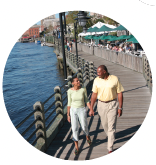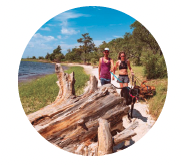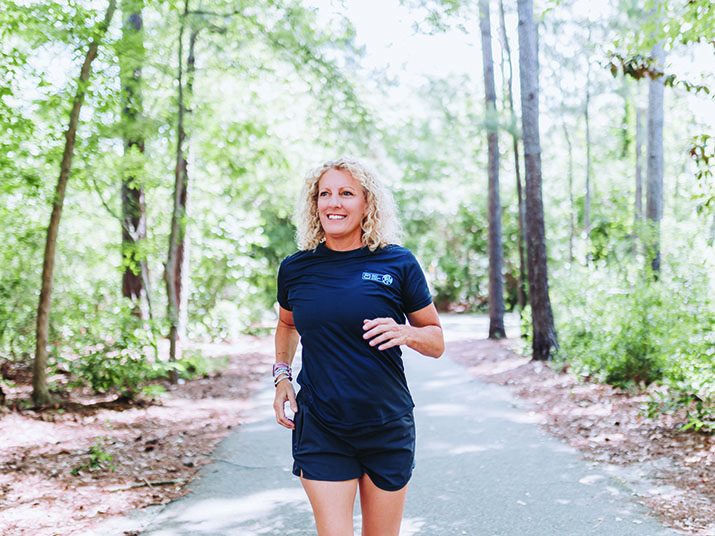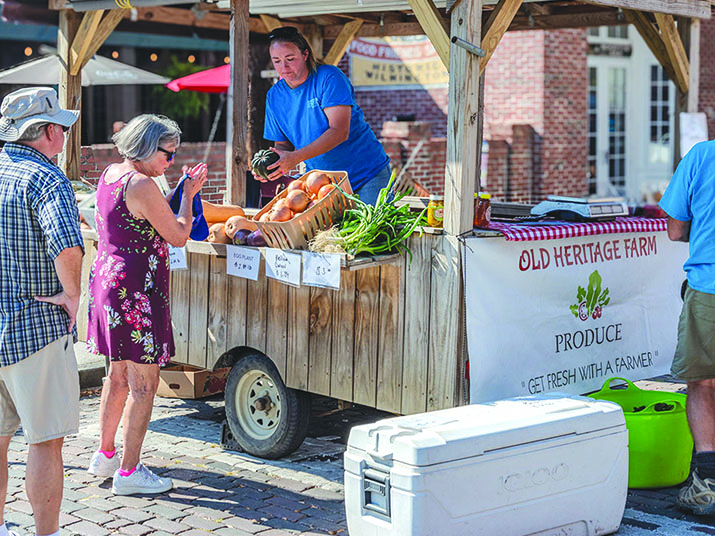Hitting the trails around Wilmington

Invariably, one of the first things that day-trippers or newcomers to the Wilmington area want to do is park their car, hop out and soak up some sun and sand at one of the area’s scenic beaches.
While strolling along the ocean engages the senses and rejuvenates the soul, locals know there is another outdoor activity that is just as invigorating, and which doctors say may be even more helpful in sustaining good health.
From the Cape Fear River to the Atlantic Ocean and in a variety of adjoining communities, opportunities to walk or hike abound. With an accelerating number of baby boomers either retiring or working remotely and many choosing “Wilmington and beaches” as their preferred location, the proliferation of natural and man-made trails in Southeastern North Carolina provides numerous options to enjoy the outdoors while making new friends and staying active.
According to experts at the Mayo Clinic, a daily brisk walk can prevent or manage conditions such as heart disease, stroke, high blood pressure and cancer; improve mood, memory and sleep; and reduce stress and tension.
“The faster, farther and more frequently you walk, the greater the benefits,” Mayo Clinic staff advise.
In the greater Wilmington area, local governing bodies, businesses and nonprofits have worked together since 2013 to create a Comprehensive Greenway Plan that continues to expand. Along with parks and other nature trails, the initiative aims to bring more people together outdoors.

Before embarking on a full-fledged hike, newcomers to the area might head downtown to stroll along WILMINGTON RIVERWALK, a 1.75-mile stretch with immediate access to dining, shopping and cultural attractions that was named “Top Riverfront” in USA Today’s Readers’ Choice Awards.
Then it’s off to the GARY SHELL CROSS CITY TRAIL, a 15-mile mostly off-road pedestrian and bike route that runs from Wade Park, Halyburton Park and Empie Park and along Eastwood Road, all the way to the bridge crossing to Wrightsville Beach and a picturesque view of the Intracoastal Waterway.
“We walked the entire trail a few years ago by breaking it into short segments,” said Andy McGlinn, a retired call center manager from Wisconsin and a member of the Sierra Club, whose local Meetup group exceeds 1,000 people. “It was a fun series that we will likely repeat soon.”

On the other side of the waterway lies THE LOOP, a 2.5-mile circular path that draws a steady stream of walkers, runners and bikers who keep fit as they take in the charm of a friendly beach town. The Wrightsville Beach shoreline and the town park are just steps away.
Beyond the cross city trail and The Loop, McGlinn suggests visiting some lesser-known trails such as EV-HENWOOD NATURE PRESERVE in Leland, “a great wilderness trail” within a 175-acre coastal forest preserve; GREENFIELD LAKE, a 3.9-mile loop trail near downtown brimming with springtime azaleas and views of turtles, geese and alligators; and the cypress- and pine-covered trail at BLUETHENTHAL WILDLIFE PRESERVE on the University of North Carolina Wilmington campus.

Further south, at CAROLINA BEACH STATE PARK, nearly 9 miles of trails lead visitors through distinct habitats of plant and animal life.
Over the next few years, Wilmington city planners hope to add the WILMINGTON RAIL TRAIL to the Wilmington Urban Area Metropolitan Planning Organization’s greenway plan. To be developed along abandoned rail lines, planning is underway for a 5.9-mile pedestrian and bicycle pathway that will create “a unique space for art, exercise, and community engagement” and “honor and celebrate the local history and culture” of the city’s Northside neighborhood.
Such greenways are “the only real way to improve traffic congestion, produce cleaner air and improve our personal health,” the Sierra Club’s McGlinn believes. “We need to keep this at the forefront of plans as the region grows.”















